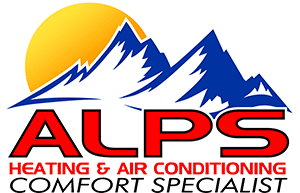What causes indoor air quality problems?
Every living human breathes air. Typically, air contains 78% nitrogen, 21% oxygen, and a mixture of other gases. Although air usually doesn’t contain many pollutants, these contaminants can cause serious health issues. When you think of contaminated air, outdoor pollutants such as car exhaust, factory emissions, and smoke from coal-burning power plants probably come to mind. Although these pollutants are common across the planet, outdoor air isn’t the only air you should worry about.
Indoor Air Quality — It’s More Important Than You Think
According to the U.S. Environmental Protection Agency, the average American spends roughly 90% of their time indoors. The EPA also suggests that some pollutants can be up to five times more concentrated indoors than outdoors.
Bad indoor air quality can have many negative effects on humans. Several studies have found high concentrations of indoor air pollutants to substantially harm workers’ productivity and performance. Upon exposure to airborne or gaseous contaminants, you can experience many immediate health effects, including:
- Fatigue
- Throat, eye, and nose irritation
- Dizziness
- Headache
- Allergy and asthma flare-ups
Poor indoor air quality doesn’t just have short-term effects; it can cause acute respiratory infection, COPD, cataracts, cardiovascular disease, and lung cancer. Taking potential health outcomes like these into account, studies have found that air pollutants can shorten the average life expectancy by up to two years.
Even if an air quality monitor identifies excessive concentrations of contaminants, household air pollutants aren’t always easy to identify and eliminate.
Most people don’t have instant reactions to bad indoor air quality. Rather, symptoms typically creep up on people after consistent exposure to contaminants over periods of weeks, months, or years. Even once sufferers notice these symptoms, they’re often attributed to other causes.
Educating yourself about indoor air quality is the best way to avoid these problems. Although you shouldn’t expect to become an expert, a basic foundation of familiarity with air quality is more than enough to protect yourself.
Tobacco and Other Combustible Consumer Goods
Roughly 15% of all American adults smoke tobacco. Although every form of tobacco is known to cause cancer when consumed, secondhand smoke leaves behind hundreds of substances that have been proven to cause cancer or otherwise cause damage to the human body.
Although tobacco is particularly dangerous, other smoked consumer goods also negatively affect indoor air quality. To keep your home’s air supply in good shape, you should never smoke tobacco, cannabis, herbal cigarettes, or any other combustible consumer goods indoors.
According to the CDC, no ventilation or air cleaning methods can reliably eliminate the detrimental effects of tobacco and smoked goods on indoor air quality.
Insufficient Ventilation
Admittedly, ventilation can’t prevent the negative effects of tobacco. Still, ventilation is still directly related to indoor air quality.
Ceiling and box fans, for example, only circulate existing air within homes. Although they’ll inevitably force some air outside, in turn replacing it with new air, circulating existing air doesn’t have any real benefits.
Over time, airborne pollutants keep accumulating within your home. This impairs your home’s air quality. Natural ventilation dilutes the concentration of indoor pollutants in your home.
A lack of ventilation can also encourage mold growth. Mold loves dark, damp environments with stale air.
Dirty HVAC Equipment
Most homes have central heating, ventilation, and air conditioning systems. These systems have air handlers, which sit immediately outside homes, and ductwork, which stretches dozens or hundreds of feet inside homes’ walls, crawl spaces, and attics.
Inevitably, air handlers and ducts accumulate dust and debris. Having your HVAC system serviced at least once per year will improve your home’s air quality. Signing up for a thorough air duct cleaning is a must for any homeowner who’s concerned about indoor air quality.
Volatile Organic Compounds
Modern supermarkets have entire aisles dedicated to household cleaning products. Although these products generally clean well, they’re filled with volatile organic compounds that impair indoor air quality.
Also known as VOCs, these compounds readily turn into gases. When inhaled, these gases can cause allergic reactions and other symptoms. To avoid VOCs, do some research on the cleaning products you currently have inside your home. If they contain VOCs, throw them out in favor of non-VOC cleaners.
Looking for Help? We’re Always Available
Having served thousands of happy, fully satisfied customers throughout Orange County since we were established in 1979, it’s clear that Alps Heating & Air Conditioning, Inc. is one of Southern California’s top HVAC contractors. In addition to our full line of heating and cooling services, we help homeowners achieve near-perfect indoor air quality levels through industry-leading equipment, trusted repair services, and reliable maintenance plans. Some of our indoor air quality equipment includes HEPA air cleaners, polarized media filters, and ultraviolet pathogen neutralizers. Let’s get started — reach out to us today!

